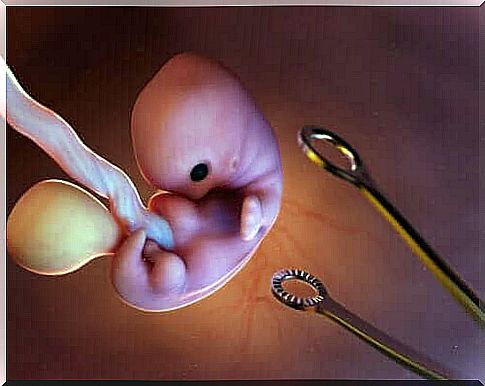Provoked Abortion: What Does It Involve?

Talking about provoked abortion can be shocking to many people. Whether it is because of ideology or religious belief, it is a topic that tends to create a great deal of debate among the entire population. Even within the same country, there are often areas with different legislation on the same subject.
The reasons for practicing this type of abortion vary widely. For example, they range from a personal decision to clinical situations that endanger the mother’s health. There are also legal provisions to exercise them in controlled places with adequate safety.
What is a provoked abortion?
We refer to a provoked abortion as the intentional termination of pregnancy. That is, it involves the decision to stop a pregnancy before the 20th week of pregnancy.
The 20-week limit is just technical. Almost all accepted definitions of abortion establish the boundary between a viable fetus and one that is not viable. This means that in case of premature birth, the chances of survival are greater if the pregnancy is over halfway.
This is about more than legislation. Some countries allow provoked abortion until the 20th week, others until the 12th or 8th. In any case, this variation does not affect the concept of the procedure.
However, if the termination of the pregnancy takes place after the pregnancy is halfway, there is no abortion. As a rule, these circumstances occur with mothers who suffer from diseases that make it unjustifiable to continue the process. This is for example in the case of pulmonary hypertension.
Based on the length of the pregnancy, provoked abortion may involve different types of techniques. It is decided to ensure minimal complications for the woman and reduce the risks of subsequent infection or bleeding.

Provoked abortion is the termination of pregnancy of your choice or due to a clinical emergency.
Also read this article: Lupus and Pregnancy; This you should know
Procedures
The approved techniques in the countries where provoked abortion is legal are divided based on how far into the pregnancy they can be used. We therefore have opportunities for the first and second trimesters.
Techniques for the first trimester
In the first trimester – up to the 14th week of pregnancy – the options are combined misoprostol and scraping. As we will discuss below, physicians recommend some methods over others.
Misoprostol is a medicine with known abortion-promoting properties. Its sale is regulated in almost all countries where its use is restricted by legal aspects. The effect it produces is an increase in the contractions of the uterus.
One way to perform a provoked abortion with this drug is by combining it with methotrexate. This drug has the property that it can inhibit the proliferation of cells. Together, these drugs stop the growth of the fetus and excrete the contents of the uterus.
In hospitals, professionals combine misoprostol with mifepristone instead of methotrexate to speed up the process. However, the maximum prescription time is until the 10th week of pregnancy. Generally, the abortion occurs within six hours of receiving the medicine. However, some women are longer about it, up to 48 hours.
The third choice is scraping, which experts do not recommend after the 16th week of pregnancy. It consists of sucking the fetus and placenta out through the vagina with a special instrument.
Due to the form of the procedure, some pain and discomfort is experienced in the woman. Bleeding also occurs from the small injuries from the scraping. In any case, it takes one day, and after a short period of observation, the woman can go home.
Provoked abortion in the second trimester
Since the fetus has grown in the second trimester, the situation is more complex to perform from a medical point of view. There are two choices: Expansion and Initiation.
In reality, enlargement involves a combination of techniques to perform a provoked abortion. Professionals use instruments to enlarge the uterus and then create a vacuum with a suction cup, and finally they scrape the inner part of the organ.
The healing process is usually immediate and it is common for the woman to be discharged the same day so she can return home. However, due to the type of this approach , women need to exercise certain reservations in the months following enlargement.
In terms of initiation, the technique involves stimulating some form of birth. For this reason, professionals only use this technique for very advanced cases between the 15th and 20th week of pregnancy.
Specialists give drugs to provoke labor pains, and the pains are reminiscent of those of a normal birth. If necessary, if the excretion does not take place, the professionals choose scraping or expansion. By doing so, they make sure not to leave any residue in the uterus, which can lead to complications later.

Provoked abortion is not legal in all countries. It remains a controversial topic all over the world today.
Provoked abortion takes place within the legal framework
It is worth noting that these procedures for provoked abortion are legal in some countries, while they are not in others. There are many differences between the laws in the different areas of the world, so not everything applies the same way in terms of the legal aspects.
The practice of any technique of this type must respect the medical standards so that they do not endanger the patient’s life. Authorized clinics must therefore have the appropriate services and tools for this purpose.









